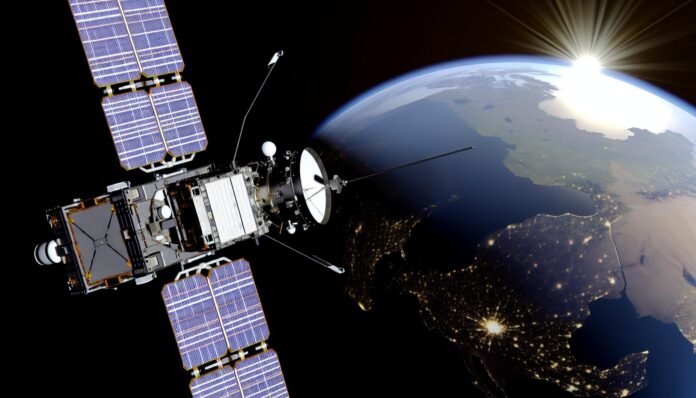The Solar Storm Threat: Why Space Weather Monitoring Matters
Solar storms are not just distant space phenomena—they pose real threats to our modern way of life. These powerful bursts from the Sun, including intense radiation and high-speed charged particles, have the potential to disrupt electrical grids, satellite communications, and even the safety protocols for astronauts. Most importantly, such disturbances could lead to significant economic fallout if left unchecked.
Because our modern infrastructure relies heavily on technology, timely and accurate information about space weather is critical. With each solar storm, the risk of widespread power outages and system failures increases, making real-time monitoring essential. Therefore, tracking space weather events is not a luxury but a necessity to safeguard daily operations across various industries.
Meet NASA’s Latest Guardians of Space
NASA, in collaboration with agencies like NOAA and ESA, is pioneering a new era of space weather observation. Their latest satellites are equipped with cutting-edge instruments that not only monitor solar activity but also provide detailed insights that can predict emerging space weather conditions. This initiative is part of a global effort to ensure that every potential threat is met with an equally robust response.
Besides that, these satellites integrate data from international missions such as ESA’s Vigil project, which focuses on innovative space weather reporting tools. As explained in recent updates available on the TS2 Space website, these combined efforts result in better preparedness and ongoing resilience against solar threats.
GOES-19: Monitoring Earth and the Sun—All in One
Launched in June 2024 and active as of April 2025, GOES-19 is a linchpin in NOAA’s geostationary fleet for the eastern hemisphere. This satellite not only monitors the Earth’s weather patterns but also keeps an active watch on the Sun. Thanks to its state-of-the-art CCOR-1 compact coronagraph, it is capable of detecting coronal mass ejections (CMEs) in real time.
Most importantly, by imaging the Sun’s outer atmosphere, GOES-19 delivers early alerts which allow grid operators, aviation authorities, and satellite managers to implement protective measures. Because these alerts are based on near-instantaneous observations, the response time is significantly improved. Furthermore, as detailed in the GOES-R Series News, such innovations strengthen our defense against potential space weather disasters.
Small Satellite Missions: Filling Gaps with Innovation
The push for innovation is evident in NASA’s smaller satellite missions, such as SunCET and CubIXSS. These agile platforms are designed to fill the technological gaps left by larger satellites. They continuously scan the ‘middle corona’ and capture soft X-ray data which is essential for understanding both the beginning and aftermath of solar events.
Because these small satellites can be deployed rapidly and operate cost-effectively, they form a dynamic network that enhances our overall space weather monitoring capability. This approach is highlighted on the TS2 Space article Solar Tempests & Orbital Guardians, ensuring that critical data is never missed even during fast-evolving space weather conditions.
Why Early Warning Is Non-Negotiable
Every minute counts when preparing for the potential havoc a solar storm can wreak on our systems. Early warning systems allow power companies to reconfigure grids, provide astronauts with safe zones, and give satellite operators the time needed to reorient their assets away from harm. Because of the considerable benefits of this advanced warning, there is a growing consensus amongst experts that robust monitoring should be a global priority.
Therefore, the new generation of satellites has been designed to relay informative, real-time alerts. These advances are critical for mitigating the effects of solar storms, as also discussed by experts at NASA in their Earth Observer Editor’s Corner series. Besides that, operational exercises, such as the 2025 Artemis-II human spaceflight support exercise detailed on the Testbed Space Weather website, reinforce the need for prompt actions when alerts are triggered.
Global Collaboration for Space Weather Resilience
Space weather is a global phenomenon, and its challenges require a shared response among international partners. NASA, NOAA, ESA, and other organizations are working together to create a robust network capable of forecasting and responding to solar events. Most importantly, this collaborative approach improves data sharing, which in turn enhances our predictive models and early warning systems.
Because successful collaboration leads to more comprehensive monitoring, the defense against space weather becomes a united effort. As highlighted in the ESA piece on Vigil’s tools, efforts to integrate diverse datasets mean that governments and private sectors alike are better equipped to handle sudden disruptions. This multinational framework is key to ensuring the continuous operation of critical infrastructure across borders.
Looking Ahead: The Value of Vigilance
Looking ahead, continuous innovation in satellite technology will play a central role in safeguarding our future. With energy, aviation, communications, and defense systems all deeply intertwined with technology, any interruption can have significant ramifications on daily life. Therefore, the role of satellites in providing extended warning times is invaluable.
Most importantly, the improvements in space weather monitoring afford us not only data but the essential time needed to protect vital services. As we continue to harness the potential of these new satellites, our resilience against natural solar events grows stronger. This evolving story of vigilance underscores the necessity of investing in and expanding our space weather tracking systems, giving us a clear advantage in mitigating disruptions before they occur.



